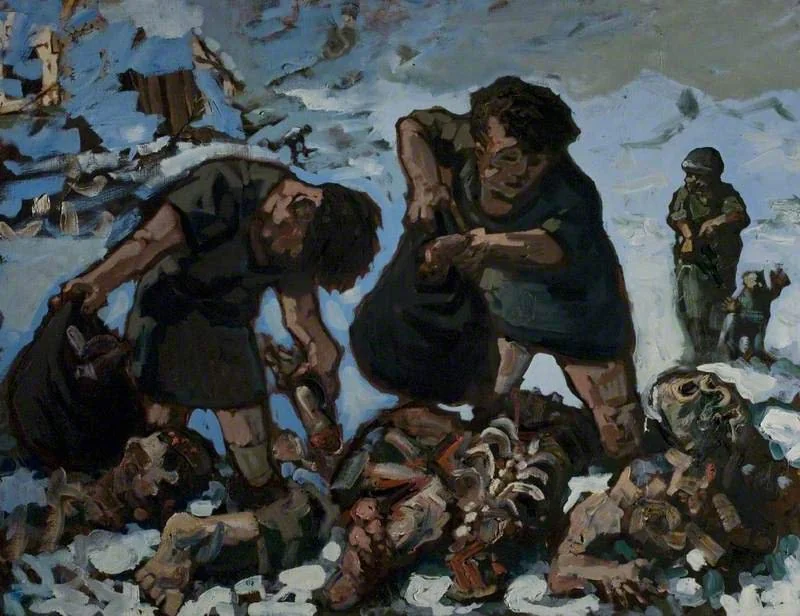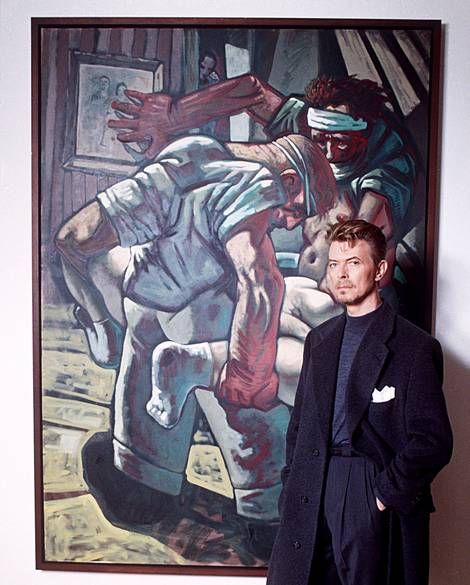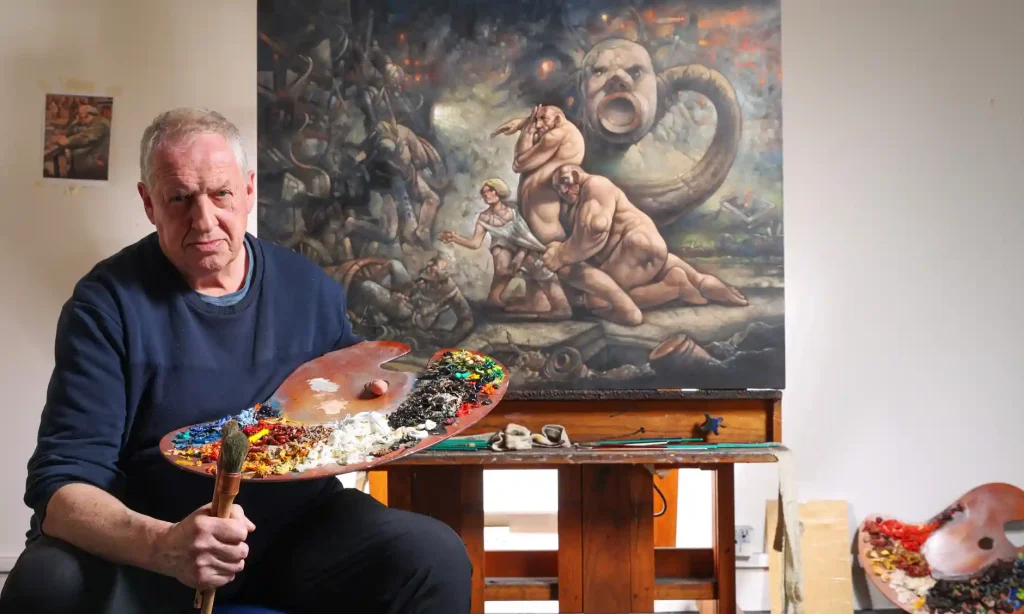Tsuktiben Jamir
Born in 1958, Peter Howson is a Scottish painter. He is well known for his stint as a British official war artist for the Imperial War Museum in 1993 during the Bosnian War. As a result, many of the paintings he produced show scenes of abhorrent depravity, such as rape, castration, and impaling. In Plum Grove, the artist mixes events he saw with Croatian reports of how Muslim captors treated their captive soldiers. Howson’s art deals with individual brutality and suffering and is not political in intent.
The set’s introduction on his website is intriguing: “On his appointment as the official artist of the Bosnian war, The Times newspaper wrote that Peter Howson’s ‘often violent images’ paired with his ability to ‘invest ordinary men and women with heroic dignity’, made him an obvious choice to chronicle the catastrophe in Bosnia.

Courtesy: ArtUK.
Peter’s magnificent response to this challenge marked an essential development in his art – particularly his more vibrant pallet. The resulting images are astounding historical documents: representing the profound and ingrained impact that the scenes in Bosnia had on Peter – deeply affecting the nature of his art and his personal life. Peter has described his time as an artist in Bosnia as being wrought with difficulty.
His mind was often blank with fear, and he struggled to gain any sense of the imagination necessary to make the harrowing images relatable to an audience back home. Moreover, Peter’s priority in his art was to search for humanity in the hellish scenes of his trip – something he has admitted to having been searching for in his work ever since.”
Immersed in the heart-wrenching conflict, Howson used his artistic skills to capture the raw emotions and harrowing experiences of those affected by the war. His stint as a war artist during this tumultuous period brought a unique perspective and powerful storytelling to the atrocities and resilience witnessed in Bosnia.
Howson undoubtedly suffered from the irreversible effects of witnessing the horrors in Bosnia. He tells The Guardian, “We were on a mission to pick up these Bosnian women and children, who had all been abused. That day changed my whole life. It changed my view of humanity, and I lost all hope for what people are. I remember picking up a young child, the look on its face, the smell. It had defecated and not been cleaned while some women banged their heads against brick walls.”
His 1994 artwork ‘Croatian and Muslim,’ inspired by the testimonies of rape victims, was rejected by the museum that had commissioned him because it was considered controversial at the time. Moreover, people were terrified of the painting, as the subject and portrayal were heavy.

Courtesy: Pinterest.
Howson relates to The Guardian how the great David Bowie bought ‘Croatian and Muslim’ and how that made things alright for him. He mentions the singer, who is merely one of his many famous admirers—Madonna is another—without displaying overt pride.
Peter Howson’s works frequently employ the masculine body as the vehicle for themes of struggle, devastation, and redemption.





